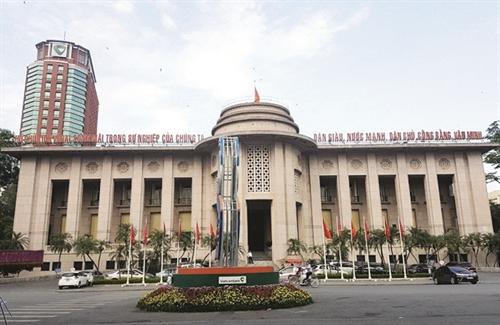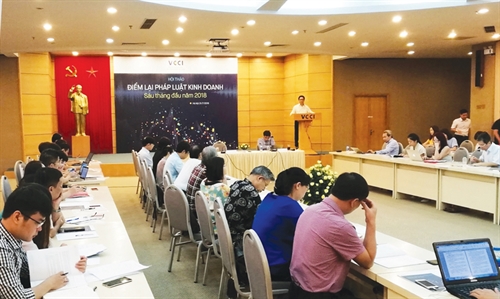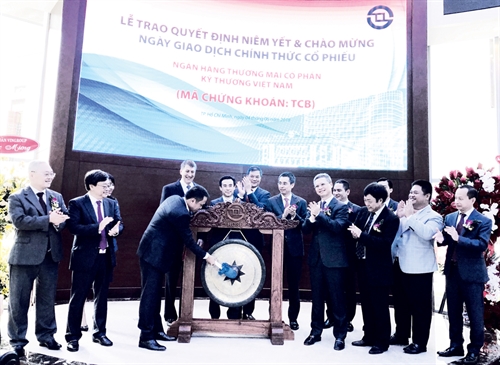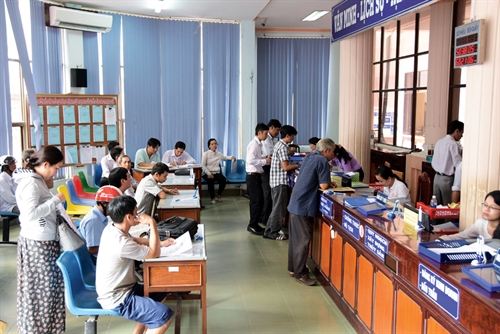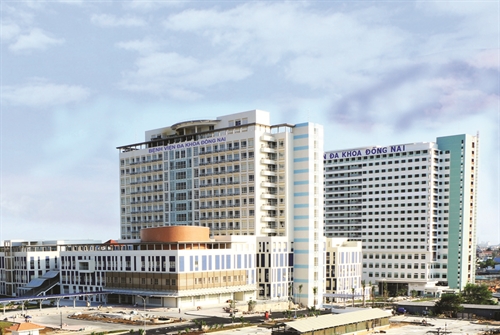Nguyen Van Minh*
LL.B & Attorney at Law
Since the National Assembly’s Resolution 42/2017/QH14 on the pilot settlement of bad debts of credit institutions (Resolution) was adopted on June 21, 2017, the bad debt settlement, particularly collateral foreclosure[1], by credit institutions and foreign bank branches (collectively referred to as credit institutions) in the country has seen some improvements. Aimed at addressing inadequacies of the precedent regulations on disposal of collaterals of bad debts, this Resolution itself contains some ambiguous points that need to be clarified.
Types of bad debt to be settled under the Resolution
As prescribed in Article 4.1, the Resolution’s governing scope covers (i) loans borrowed and treated as bad debts before August 15, 2017, and (ii) loans borrowed before August 15, 2017, and treated as bad debts during the effective period of the Resolution[2].
As the Resolution does not target loans borrowed and later treated as bad debts after August 15, 2017, credit institutions that wish to initiate the foreclosure process against collaterals of such bad debts need to refer to other relevant regulations. However, the current applicable law, i.e. Civil Code No. 91/2015/QH13 dated November 24, 2015 (Code), seems not to officially recognize the foreclosure right of credit institutions. Specifically, Article 301 of the Code prescribes that if the collateral holder fails to hand over the collateral, the secured party may request settlement by the court, unless otherwise prescribed by relevant laws. However, since Article 307 of the Code mentions “foreclosure expenses”, it can be said that the foreclosure right is indirectly recognized by law.
It should be noted that the Resolution was adopted for pilot settlement of bad debts and it seems that the legislators want credit institutions to focus on clearing off old bad debts. Nevertheless, we would suggest that competent authorities soon provide explicit guidance or consider expanding the Resolution’s governing scope to all types of bad debts.
Foreclosure against soft house[3] in case of mortgage of property right arising from “future” house sale and purchase contracts
At present, lending to buy soft houses and taking mortgage of very to be-bought houses are common practices. In this case, credit institutions take mortgage in the physical form of property to be formed in the future (future houses). However, not a few credit institutions choose to take mortgage of the property right arising from contracts on sale and purchase of future houses (mortgage of property right).
A question might be raised that whether credit institutions may initiate the foreclosure process against soft houses after taking mortgage of the property right thereto or not. The answer is that they may not because the collateral in this case is not “the future house” but “the property right”. Even when they are entitled to do so, it is hardly possible for them to foreclose the property right which is an intangible collateral, especially when there is no specific guidance on this kind of foreclosure. In our opinion, to make the foreclosure process possible, the collateral should be converted from “intangible property” into “tangible property”. Specifically, we may refer to two following methods: (i) Going through the process of transitional mortgage registration which changes the mortgage of property right to mortgage of a future house or another property; and (ii) Entering into a new mortgage agreement and registering the new mortgage under regulations.
The process of transitional mortgage registration is clearly prescribed in Joint Circular 09/2016/TTLT-BTP-BTNMT dated June 23, 2016, of the Ministry of Justice and Ministry of Natural Resources and Environment, guiding the mortgage registration of land use rights and property attached to land, and Government Decree 102/2017/ND-CP dated September 1, 2017, on the security registration. However, there is a regrettable practice that units competent to accept the transitional mortgage registration, namely the Land Registration Office/Natural Resources and Environment Section, in a number of localities refuse to register the transitional mortgage for the reason that the initial mortgage of property right was registered with the National Registration Agency for Secured Transactions, and there is no information system connection between these two agencies for certifying contents of initial mortgage registration even though the parties can produce the original registration certificate of property right mortgage.
As a result, the parties have to go through the process of entering into a new mortgage agreement and registering the new mortgage. However, this process may be exposed to two prominent risks: (i) The validity date of security registration[4] will be inevitably changed, possibly affecting the priority right of the credit institution in case of dispute with a third party; and (ii) The mortgagor refuse to enter into a new mortgage agreement.
From the above analysis, it appears that the foreclosure process against soft houses mortgaged in the form of property right remains a hard nut for credit institutions to crack. Hopefully, relevant competent agencies, particularly the Ministry of Natural Resources and Environment and Ministry of Justice, will soon provide instructions for the responsible units to accept transitional mortgage registration as mentioned above.
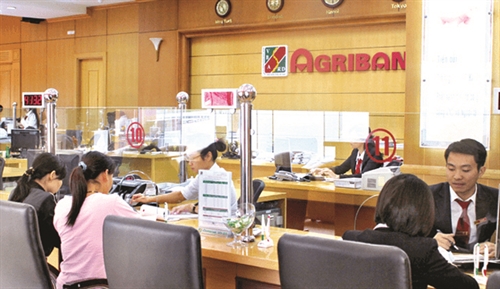 |
| Agribank is one of the six credit institutions selected to implement National Assembly Resolution 42 on pilot settlement of bad debts, along with Sacombank, ACB, BIDV, Techcombank and VietinBank__Photo: VNA |
Foreclosure conditions
Article 7.2 of the Resolution prescribes five conditions that need to be fully satisfied by credit institutions to initiate the foreclosure process, two of which should be further explained.
First, the security agreement must clearly indicate the securing party’s consent to the credit institution’s right to foreclose the collateral of the possible bad debt in case of disposing the collateral as required by law. We find this condition impractical for credit institutions to meet at present as not all security agreements of credit institutions contain the clause on the foreclosure right, while a number of previous regulations provide the foreclosure right as a statutory right of credit institutions which need not to be agreed upon in security agreements. Therefore, if wishing to initiate the foreclosure of the collateral, credit institutions have to agree upon an annex in the security agreement on foreclosure with the securing party. However, this is not easy especially when the loan repayment is overdue and the securing party usually does not cooperate with the credit institution.
Second, the collateral is not subject to a dispute in a case that has been accepted but remained unsettled or has been settled by a competent court; the collateral is not subject to a provisional urgent measure imposed by a court; and the collateral is neither seized nor subject to a measure to secure judgment enforcement as prescribed by law. We may find an unclear point when connecting this condition with Article 11 of the Resolution which prescribes that the collateral of a bad debt shall not be seized under Article 90 of Law on Civil Judgement Execution[5]. As a result, the third party (judgement creditor) in the middle of the above relation still reserves the right to request the Civil Enforcement Agency to apply a measure to secure judgement enforcement as prescribed in Article 66 of the Law on Civil Judgement Execution. In this scenario, the credit institution may not foreclose the collateral of the securing party (judgement debtor) and the third party (judgement creditor) may not request the Civil Enforcement Agency to continue the seizure or disposal of the collateral under regulations. Consequently, the credit institution has to bring the case to a competent authority for dispute resolution, which might be a time-consuming and costly process.
Foreclosure authorization
Article 7.6 of the Resolution prescribes that the credit institution may not authorize a third party other than its debt and asset management company to carry out the foreclosure. However, since the collateral foreclosure is a long process involving many steps, including some procedural jobs usually performed by other agencies hired by the credit institution to support the foreclosure process, such as the bailiff office’s making of an official statement recording the collateral foreclosure, security guard company’s protection of the collateral after successful foreclosure, etc., whether such supporting activities are regarded as foreclosure authorization or not? It is recommended that guidance will be provided to specify activities supporting the foreclosure process but not regarded as foreclosure authorization.
What credit institutions can do to foreclose collateral
In case the securing party refuses to cooperate or fails to appear at the collateral’s premises according to the credit institution’s notice, then what measures the credit institution is entitled to take? The Resolution and other relevant regulations remain silent on this issue which might directly affect on foreclosure results. Moreover, in reality we can hardly expect the securing party’s voluntary handover of the collateral to the credit institution for disposal unless there is an order from a competent authority. Guiding texts are therefore needed to specify measures that the credit institution can take to get the collateral foreclosure done, for example: hiring persons to unlock a locked collateral (property) or hiring the bailiff office to make an official statement recording the existing property or even carrying out the sealing against such property.-
[1] Foreclosure means an activity of credit institutions to repossess their collateral/security asset of a delinquent loan for disposing and debt recovery. This activity is different from seizure (attachment) of judgement debtor’s asset which is a necessary procedure of law conducted by the civil enforcement agency to bring the asset to auction.
